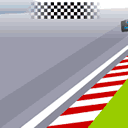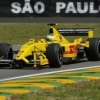Is it required to start the race on full wets when it is raining?
Yes, if you start behind the SC. Sporting Regulations 24.4 i
If the race is started behind the safety car because of heavy rain (see Article 39.16), or resumed in accordance with Article 42.5(a), the use of wet-weather tyres until the safety car returns to the pits is compulsory.
A penalty under Article 38.3(d) will be imposed on any driver who does not use wet weather tyres whilst the safety car is on the track at such times.
For your information: 38.3d is a 10 seconds stop and go penalty (time loss: a pitstop+10 seconds). In some cases I can even imagine that it is worth to take that penalty though, if you can save this pitstop and gain a bit time on the faster tyre on track. Well....
Edited by Marklar, 16 July 2016 - 22:32.


































